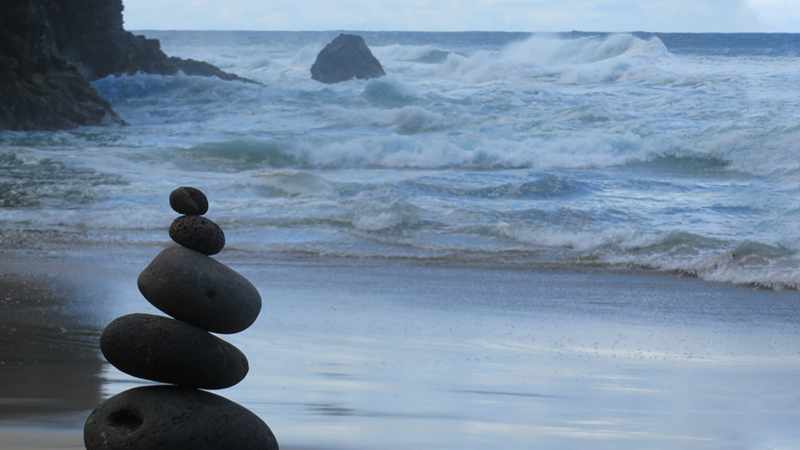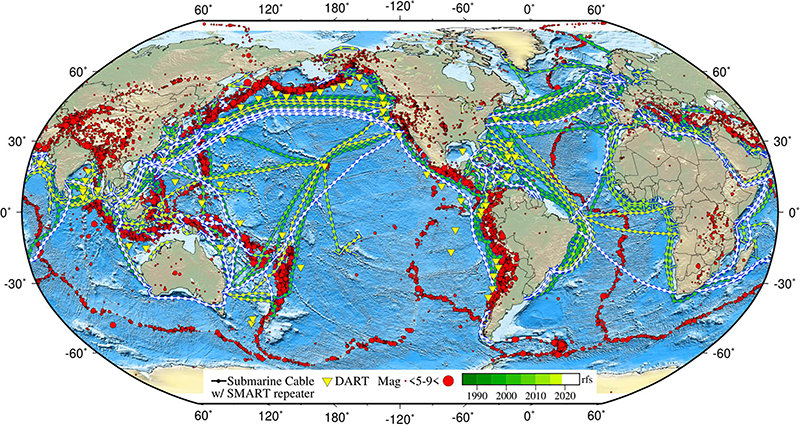 Steve Lentz
Steve LentzDirector of Network Systems Science and Engineering, Ocean Specialists Inc. (OSI)
Many of you will have heard of distributed acoustic sensing (DAS) and SMART cables. A recent press release by Google introduces another method for using optical fibers as sensors. What are the differences, and which should you take note of? All of them seem to have something to do with earthquake detection, but is that their real purpose?
Steve Lentz, director of network systems science and engineering at Ocean Specialists Inc. (OSI), discusses these underwater sensing technologies and how they compare and contrast, along with some advantages and disadvantages of each.


Steve Lentz
Director of Network Systems Science and Engineering, Ocean Specialists Inc. (OSI)
Many of you will have heard of distributed acoustic sensing (DAS) and SMART cables. A recent press release by Google introduces another method for using optical fibers as sensors. What are the differences, and which should you take note of? All of them seem to have something to do with earthquake detection, but is that their real purpose?
Steve Lentz, director of network systems science and engineering at Ocean Specialists Inc. (OSI), discusses these underwater sensing technologies and how they compare and contrast, along with some advantages and disadvantages of each.
DAS measures strain on an optical fiber caused by sound and vibration. It has a range of up to 125 km and can determine the location of the sound to within one meter. DAS for telecommunications systems is derived from technology used in offshore oil and gas production and is now commercially available from multiple sources. DAS is intended to support cable protection in both land and shallow water cable segments as it can easily detect digging, trawling, passing vessels, and other disturbances. For this reason, both new and existing cable operators should at least consider the use of DAS on their systems. DAS typically employs Raman amplification to boost the probe and reflected signals, and at least for now, requires a separate fiber within a cable.Recent publications indicate that the scientific community is getting behind DAS for earthquake detection. See “Further Reading” below for some examples. Those who explore these papers will note that several different techniques are in use. Methods based on Rayleigh scattering are the most typical. This is the same phenomenon that makes optical time-domain reflectometers (OTDRs) possible, although DAS requires extracting much more information than just the magnitude of the backscattered signal.
One method of particular interest uses ultra-stable lasers (first developed to transmit signals used to coordinate atomic clocks) and measures changes in the phase of the signal. This is of particular interest because the signal can be transmitted through amplifiers and repeaters. Seismic disturbances anywhere along the cable can be detected and localized. By using two or more cables, the location of the seismic event can be estimated. (The paper does not state whether the detection signal is combined with traffic signals on the same fiber, but in principle this can be accomplished using dense wavelength division multiplexing.)
Google’s press release indicates that their researchers are using changes in the state of polarization (SOP) of optical signals to detect events along a fiber. While there are few details as of yet, this provides another detection method. We know that disturbances to the fiber affect the polarization of optical signals and that this can, and in fact must, be detected by a receiver because a failure to track polarization changes can result in a burst of errors. (Modern transceivers have largely addressed this issue, but it is an inescapable characteristic of coherent transmission.) We can also imagine that by encoding a pattern (i.e., data) onto the optical signal, the time, and therefore the location of the disturbance can be determined. Researchers collaborating with Google are also investigating tsunami detection using this same method. Whether this proves better, as good, or less effective than other methods remains to be seen.
 The original concept of a SMART cable relies on adding sensors to repeaters—this is quite different from distributed sensing which uses fiber as a sensor. The three sensor types are accelerometers, pressure sensors, and temperature sensors. These have been selected based on a consensus of scientists to address not only seismology but also climate change. Introducing new components into a repeater is naturally challenging and as a result, SMART cables have not taken off in the same way as DAS. Nevertheless, several groups continue to make progress on the necessary development work. If successful, SMART cables offer seismic detection of nearly the same quality as land based or dedicated ocean-bottom seismometers, the ability to detect ocean waves, tsunamis, and sea level changes, and insights into the amount of heat energy being stored in and flowing through the deep ocean. By directly detecting tsunami waves (rather than making predictions based on earthquake locations), SMART cables could provide tsunami warning capabilities on par with existing buoy-based systems.
The original concept of a SMART cable relies on adding sensors to repeaters—this is quite different from distributed sensing which uses fiber as a sensor. The three sensor types are accelerometers, pressure sensors, and temperature sensors. These have been selected based on a consensus of scientists to address not only seismology but also climate change. Introducing new components into a repeater is naturally challenging and as a result, SMART cables have not taken off in the same way as DAS. Nevertheless, several groups continue to make progress on the necessary development work. If successful, SMART cables offer seismic detection of nearly the same quality as land based or dedicated ocean-bottom seismometers, the ability to detect ocean waves, tsunamis, and sea level changes, and insights into the amount of heat energy being stored in and flowing through the deep ocean. By directly detecting tsunami waves (rather than making predictions based on earthquake locations), SMART cables could provide tsunami warning capabilities on par with existing buoy-based systems.
To summarize, DAS is here today and can provide important benefits for cable protection in shallow water. DAS is also being developed for earthquake detection and initial results are promising. Some DAS techniques can operate over repeatered cables, but these are not yet commercially available. Given that DAS can, in many cases, be retrofitted to existing cables, it is likely to see widespread deployment within the next few years. SMART cables can ultimately provide data beyond earthquake measurement, and while we hope to see some demonstration systems in the next few years, widespread deployment remains a future vision.
Further Reading
Science: https://science.sciencemag.org/content/361/6401/486.editor-summary
Nature: https://doi.org/10.1038/s41467-019-13262-7
APL Photonics: https://doi.org/10.1063/1.5139602
https://www.itu.int/en/ITU-T/climatechange/task-force-sc/Pages/default.aspx
https://siliconangle.com/2020/07/16/google-using-subsea-cable-network-detect-earthquakes-tsunamis/







